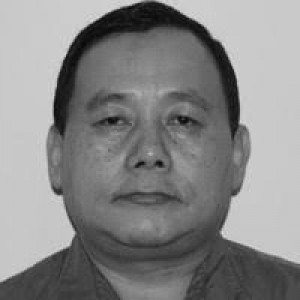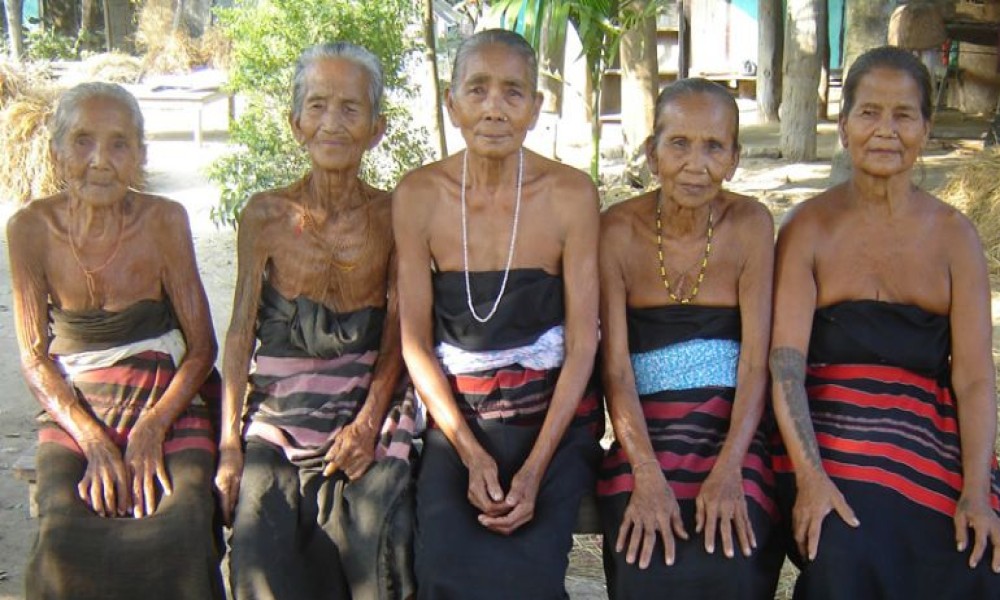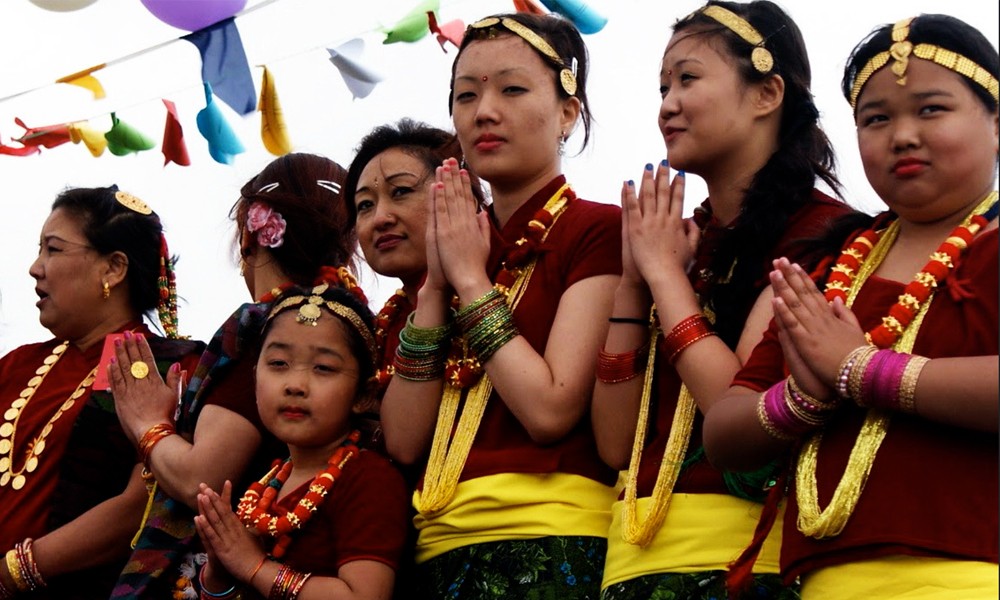Indigenous Dhimal people from Sunsari, Morang and Jhapa districts in Nepal's far-eastern plains region gather at Gram Than, a temple deep in a village called Rajarani, to perform Sirijat Pooja the day after every Nepali New Year.
Later, each Dhimal village performs their own Sirijat Pooja at their own Gram Than over the next two months. It is an important cultural event in the Dhimal community.
But this year, Dhimal people have not been able to perform Sirijat Pooja as a community due to the COVID-19 pandemic. They are performing this ritual individually at their own houses.
Dhimal people have been performing Sirijat Pooja to ward off epidemics, flooding and famine. One may wonder if such a religious act can protect people from natural calamities. If you are among those questioning the logic behind Sirijat Pooja, I would like you to suspend your rationale thought for a moment and see this cultural act as a text to understand the intwined relations between indigenous people and the nature.
Dhimal people have been performing Sirijat Pooja to ward off epidemics, flooding and famine. One may wonder if such a religious act can protect people from natural calamities.
In this article, I will analyze how indigenous Dhimal people's experience about surviving epidemics, coexistence between natural and culture and social practices are reflected in a religious ceremony like Sirijat Pooja.
Malaria, cholera and culture
Sunsari, Morang and Jhapa were once a densely forested area, a hotbed of malaria. In his book 'Sketches from Nepal', British physician Dr Henry A. Oldfield has described Morang as a malaria-infested district with deathly climate and wetland. Jhapa and Morang were known as Kalapani, where the hill dwellers would not survive in the summer.
But this eastern Terai region infested with deadly mosquitos and wild animals was home to Indigenous Peoples like Dhimal, Meche, Koche, Rajbanshi, Tharu and Uraun. They had developed immunity to mosquito-borne diseases like Malaria.
Dhimal people today believe that their ancestors survived because of community rituals, indigenous food and consumption of medicinal herbs. Dhimal use Chiraito (Swertia) a lot. They use dust power of Chiraito in almost every traditional food item. They also consume medicinal herbs like Harro and Barro (Myrobalan). They hunt down monitor lizards for meat.
Dhimal people lived in close proximity to dense forests, and by the rivers. Their livelihood was interconnected with forest and rivers. They would fish in the river, hunt down animals in the jungle and grow food in the field.
Traditionally, Dhimal people lived in close proximity to dense forests, and by the rivers. Their livelihood was interconnected with forest and rivers. They would fish in the river, hunt down animals in the jungle and grow food in the field.
It is not that they were totally immune to malaria, but they had developed herd immunity against this mosquito-borne disease. So even if some Dhimal people got infected with malaria, they were unlikely to transmit it to the mass.
Dhimal's population was ravaged by cholera more than malaria. Cholera had turned into a deadly endemic, which had the potential to wipe out entire villages.
Dhimal people's most effective weapon against cholera was migration. Once people died of cholera in their village, they would abandon it altogether and settle down in a new place.
Ganesh Babai, a septuagenarian Dhimal with whom I have interacted many a time for my anthropological studies, told me: "If we did not leave the place infected with cholera, all of us would die. It was easier to migrate back then because there was a vast are of unoccupied land."
Dhimal people lived a semi-nomadic life until the elimination of infectious diseases like malaria, cholera and small poxes.
During one of the conversations with me, Ganesh Babai recalled the dreadful past: "Dhimal people were so terrified of cholera that they would not touch the bodies of even their own family members killed by this disease. They would abandon dead ones without even performing final rites. So the village abandoned by Dhimal people after a cholera outbreak would be filled with corpses and human skeletons."
In Dhimal culture, those who die unnatural deaths are believed to be evil spirits. Dhimal shamans use their power to communicate with ghosts to keep such evil spirits at bay.
Dhimal people lived a semi-nomadic life until the elimination of infectious diseases like malaria, cholera and small poxes. They did not have a practice of registering their land in government offices. They would till the land wherever they settled down, without ever having realized the need to own it legally.
As economic activity increased on the Indian side of the border with the expansion of railway network, the Rana rulers saw the eastern Terai region as an important source of revenue. In 1861, they introduced a feudal system to clear forest area for agriculture, tax land and increase economic activities.
Our ancestors first fled the village because of cholera, and then because of the taxation system imposed by the State.
Dhimal people were unable to adapt to this new system. Unable to pay tax to the state, and crushed by the atrocities of feudal lords, they began to flee the villages they had cultivated through the deadly epidemics of malaria.
Ganesh babai told me: "Our ancestors first fled the village because of cholera, and then because of the taxation system imposed by the State."
Sirijat Pooja and its sociological subtext
Indigenous Dhimal people are the worshipers of the nature. They believe that they can stay healthy and unaffected by calamities only if they co-exist with the rivers, rivulets, forest, wild animals, insects and all invisible beings.
indigenous communities believe that they will suffer from epidemics, famines and natural calamities if they tamper with the nature instead of living in harmony with all beings.
To ward off epidemics, famines and disasters, they perform Sirijat Pooja at their Gram Than every year. During this annual ritual, they worship all their deities, evils spirits, invisible forces, forest, rivers, birds, rats, and even mosquitos. They light incense sticks, offering rice grains, betel nuts, banana and food to all visible and invisible beings to strike a deal with them: "We are feeding you all today, do not cause trouble to us."
Dhimal people's Sirijat Pooja underscores the importance of coexistence with the nature, and every being that lives in it. They abstain from eliminating other beings to be safe. Instead, they try to pacify all beings so everyone can live in harmony. During Sirijat Pooja, Dhimal shamans do not harm even mosquitos. They use their magic and mantra to trap the mosquitos instead of swatting them down.
Like Dhimal, indigenous communities believe that they will suffer from epidemics, famines and natural calamities if they tamper with the nature instead of living in harmony with all beings. As we live in an extended lockdown to be safe from the COVID-19 pandemic, we can perhaps decode the cultural meaning and significance of Sirijat Pooja, and other indigenous rituals.
This is an unofficial and summarized version of the translation of his article originally published in Naya Patrika daily. To read the original article:https://jhannaya.nayapatrikadaily.com/news-details/955/2020-04-25?fbclid=IwAR0ALwDcMvxm6kDbUFNSCK96V-dAJwJUnXakuoVzBsKAt7TyY0ogg-OKwpk








